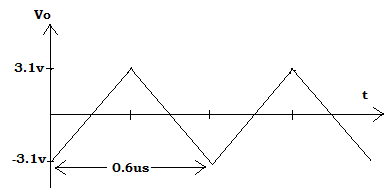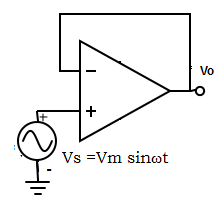This set of Linear Integrated Circuit Multiple Choice Questions & Answers (MCQs) focuses on “Slew Rate – 1”.
1. Slew rate is defined as the rate of change of
a) Output voltage with respect to time
b) Input voltage with respect to time
c) Both output input voltage with respect to time
d) None of the mentioned
View Answer
Explanation: Slew rate is the maximum rate of change of output voltage caused by a step input voltage with respect to time.
2. How the slew rate is represented?
a) 1V/ms
b) 1V/s
c) 1V/µs
d) 1mv/S
View Answer
Explanation: Slew rate are usually specified in V/µs. For example, 1 V/µs means that the output rises or falls no faster than 1V every microsecond.
3. The natural semiconductor LH0063C has a slew rate of
a) 1400V/µs
b) 6000V/µs
c) 500V/µs
d) None of the mentioned
View Answer
Explanation: National semiconductor LH0063C has a slew rate of 6000V/µs. Generally practical op-amp is available with slew rate from 0.1V/µs to well above 1000V/µs.
4. Rise time is specified for
a) Large signal
b) Medium signal
c) Small signal
d) All of the mentioned
View Answer
Explanation: Rise time is specified for small signal, usually when the peak output voltage is less than one volt.
5. Op-amps with wide bandwidth will have
a) Increase in output
b) Higher slew rate
c) Low response time
d) None of the mentioned
View Answer
Explanation: An op-amp slew rate is related to its frequency response. Usually op-amps with wider bandwidth have higher (better) slew rate.
6. Which factor is responsible for causing slew rate?
a) Internal capacitor
b) External resistor
c) None of the mentioned
d) Both internal and external capacitor
View Answer
Explanation: Capacitors require a finite amount of time to charge and discharge. Thus, a capacitor inside or outside the op-amp causes slew rate.
7. Find the value of capacitor, if the rate of change of voltage across the capacitor is 0.78V/µs and current= 12µA.
a) 5µF
b) 2µF
c) 10µF
d) 15µF
View Answer
Explanation: Rate at which the voltage across the capacitor increases is given as dVc/dt= I/C
=> C= I/ (dVc/ dt) = 12µA/0.78V/µs = 15.38 ≅15µF.
8. Find the slew rate of op-amp from the output waveform given below?

a) 3.4V/µs
b) 10V/µs
c) 20.66V/µs
d) 16V/µs
View Answer
Explanation: Slew rate is defined as the maximum rate of change of the output
SR = 3.1-(-3.1v)/ (0.6/2)µs =6.3/0.3 = 20.66Vµs.
9. For the circuit shown below, calculate the rate of change of output signal

a) Vm ωcosωt
b) Vm cosωt
c) Vm cosωt/ωt
d) Vm cosωt/ω
View Answer
Explanation: The given circuit is a voltage follower circuit. So, input voltage = output voltage
=> Vo= Vmsinωt
=>∴ the rate of change of the output voltage = dVo /dt= d(Vmsinωt)/ dt = Vm ωcosωt.
10. At what condition, the output of op-amp will be free of distortion?
a) Slew rate > 2πfVm /106 V/µs
b) Slew rate > 2πfVm /106 V/µs
c) Slew rate ≥ 2πfVm /106 V/µs
d) Slew rate = 2πfVm /106 V/µs
View Answer
Explanation: As long as the value of right hand side equation is less than the slew rate of op-amp, the output wave form will always be undistorted.
Sanfoundry Global Education & Learning Series – Linear Integrated Circuits.
To practice all areas of Linear Integrated Circuits, here is complete set of 1000+ Multiple Choice Questions and Answers.
If you find a mistake in question / option / answer, kindly take a screenshot and email to [email protected]
